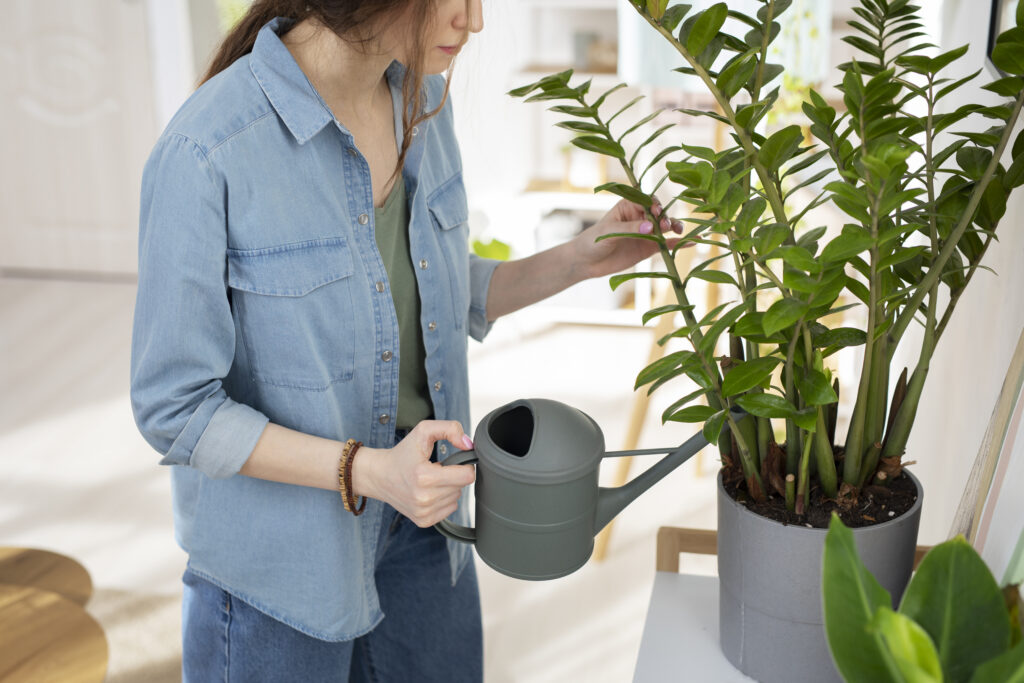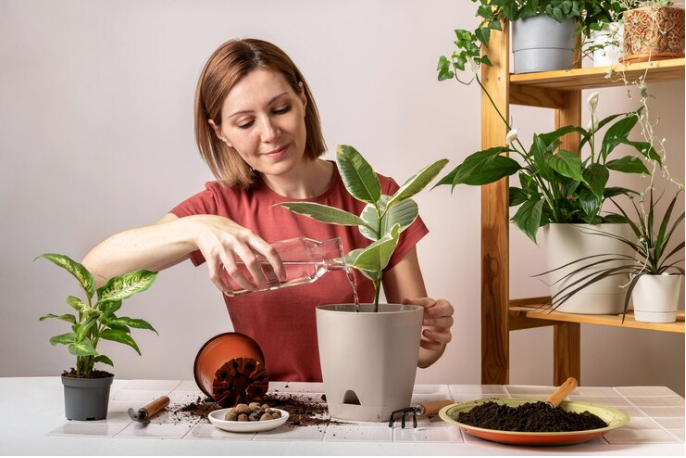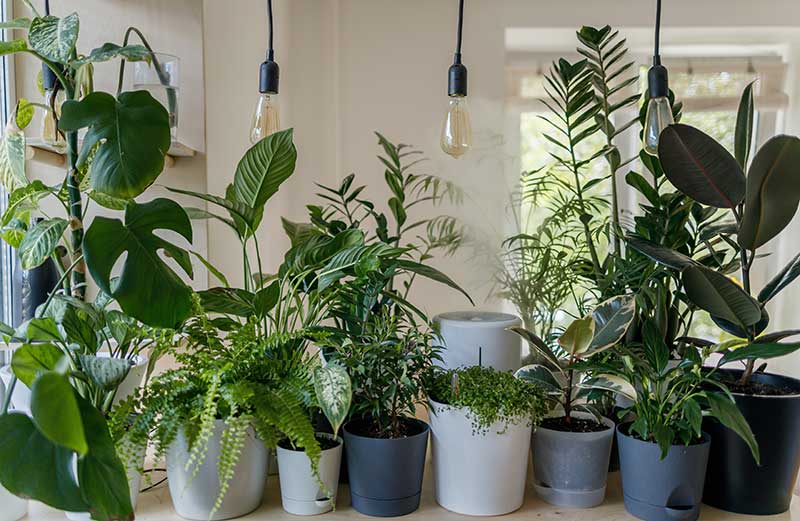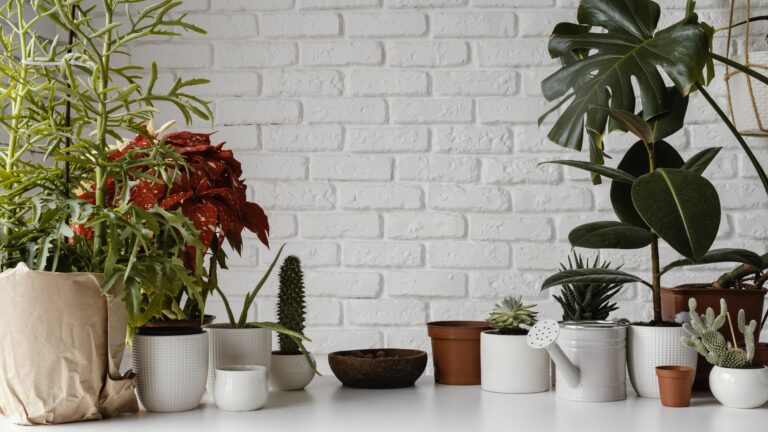Contents
- 1 Welcome to the World of Indoor Gardening: 10 Essential Tips for Thriving Plants in Your Apartment
- 2 Choose the Right Plants for Your Apartment
- 3 Provide Adequate Light for Your Indoor Plants
- 4 Watering Wisely: The Secret to Happy Indoor Plants
- 5 Use Quality Potting Soil for Healthier Plants
- 6 Maintain Proper Humidity for Thriving Indoor Plants
- 7 Fertilize Appropriately for Lush, Green Plants
- 8 Prune and Trim Regularly for a Healthier Indoor Garden
- 9 Repotting When Necessary: A Guide to Keeping Your Plants Happy
- 10 Pest and Disease Management: Keeping Your Indoor Plants Healthy
- 11 Create a Plant-Friendly Environment: Making Your Space Perfect for Indoor Plants
- 12 Conclusion: Embrace Your Indoor Garden Journey
Welcome to the World of Indoor Gardening: 10 Essential Tips for Thriving Plants in Your Apartment
Are you dreaming of a lush, green space right in your apartment, but feel overwhelmed by the thought of keeping indoor plants alive? Don’t worry, you’re not alone! Many apartment dwellers crave the beauty and freshness that plants bring but aren’t sure where to start or how to keep them thriving in a small, sometimes low-light space.
Indoor plants can transform your apartment into a cozy, vibrant oasis. Not only do they add a splash of nature to your decor, but they also improve air quality and boost your mood. However, making sure your plants thrive in your unique living situation requires a little know-how.
In this guide, we’ll walk you through ten essential tips to help your indoor plants flourish, no matter how busy your schedule or how little light your apartment gets. From choosing the right plants to understanding their watering needs and everything in between, we’ve got you covered.
So, if you’re ready to turn your apartment into a plant paradise, keep reading. Let’s get those green thumbs going and make your indoor garden dreams come true!
Choose the Right Plants for Your Apartment
When it comes to indoor gardening, picking the right plants is key to a thriving green space. Not all plants are created equal, and some are definitely better suited for apartment living than others. Let’s dive into how you can choose the perfect plants to match your lifestyle and your apartment’s unique conditions.
Go for Low-Maintenance Options
If you’re new to plant care or simply have a busy schedule, low-maintenance plants are your best friends. These green beauties require minimal attention and still look fabulous. Think Snake Plants, Pothos, or ZZ Plants. These plants are tough cookies—they can handle a bit of neglect and still thrive. Plus, they’re perfect for beginners who might be just starting their plant journey.
Consider Your Light Levels
Not all apartments are bathed in sunlight, and that’s totally okay! It’s important to match your plants with the light conditions available in your space. If your apartment gets lots of bright, direct sunlight, you might want to go for plants like Succulents or Cacti, which love those sunny spots. On the flip side, if your place is a bit shadier, don’t worry! Plants like Ferns or the Cast Iron Plant can handle lower light levels and still stay healthy and happy.
Choosing the right plants not only ensures that they’ll grow well but also means you’ll have a thriving indoor garden that enhances your living space. So take a look around your apartment, check out your light levels, and pick out plants that will be the perfect match for you!
Provide Adequate Light for Your Indoor Plants
Light is one of the most important factors in keeping your indoor plants healthy and happy. While it might seem like a small detail, getting the lighting just right can make a big difference in how well your plants thrive. Let’s break down how to ensure your plants get the right amount of light they need to flourish.
Understanding Natural Light
First things first, let’s talk about the different types of light your plants might encounter. There’s direct light, which is bright and comes straight from the window, indirect light, which is a bit softer and bounces off surfaces, and low light, which is dim and might only be available in corners of your apartment. Knowing what kind of light your plants are getting helps you choose the right ones for your space.
Supplemental Lighting
If your apartment doesn’t get enough natural light, don’t worry—there are ways to give your plants a helping hand! Grow lights are a fantastic solution. They mimic sunlight and can be a game-changer for your indoor garden. There are different types of grow lights, like LED and fluorescent, each with its own benefits. LED lights are energy-efficient and long-lasting, while fluorescent lights are great for providing a broad spectrum of light.
By understanding your plants’ light needs and using supplemental lighting if necessary, you can create a thriving environment for your indoor garden. Keep an eye on how your plants respond to their light conditions, and adjust as needed to keep them happy and growing strong!
Watering Wisely: The Secret to Happy Indoor Plants
Watering might seem straightforward, but getting it right is crucial for keeping your indoor plants in top shape. Too much or too little water can stress out your plants and even cause problems. So, let’s dive into the art of watering wisely to ensure your green friends stay healthy and thriving!
Establish a Watering Routine
One of the first steps to great plant care is setting up a regular watering routine. Different plants have different needs, so it’s important to know how often each plant should be watered. For example, succulents and cacti prefer to dry out between waterings, while ferns and peace lilies like to stay consistently moist. A good rule of thumb is to check the top inch of soil—if it feels dry, it’s time to water!
Watering Techniques
When it comes to watering, there are a few techniques that can make your life easier and your plants happier. Using a watering can is a classic choice, but if you’re looking for a bit more convenience, self-watering pots can be a great investment. They help regulate water levels and reduce the risk of overwatering. Also, make sure your pots have good drainage holes to prevent water from sitting at the bottom and causing root rot.

With the right watering routine and techniques, you’ll help your plants stay healthy and vibrant. Remember, each plant is unique, so pay attention to their needs and adjust your watering habits as necessary!
Use Quality Potting Soil for Healthier Plants
When it comes to growing indoor plants, the soil you use can make a huge difference in their health and happiness. It’s not just about filling a pot; it’s about giving your plants the best foundation for growth. Here’s what you need to know about choosing and using the right potting soil to keep your plants thriving.
Choosing the Right Soil
Not all soil is created equal, and using the right kind can help your plants grow stronger and healthier. For most indoor plants, a well-draining potting mix is essential. This type of soil helps prevent water from sitting around the roots, which can lead to problems like root rot. Look for potting mixes labeled as “all-purpose” or “indoor plant mix,” which are typically designed to provide good drainage and support healthy root growth.
Soil Amendments
Sometimes, you might need to tweak your potting soil to better suit specific plants. Adding amendments like perlite or vermiculite can improve soil aeration and drainage. Perlite is a lightweight, volcanic rock that helps soil stay loose and airy, while vermiculite retains moisture and nutrients. These additions are especially helpful if you’re growing plants that need extra-draining soil or need to hold onto a bit more moisture.
By choosing quality potting soil and making the right amendments, you’ll set up your plants for success. Healthy soil leads to healthy plants, so take the time to select and prepare the best growing medium for your indoor garden!
Maintain Proper Humidity for Thriving Indoor Plants
Humidity might not be the first thing you think about when caring for your indoor plants, but it plays a crucial role in their overall health. Many indoor plants come from tropical climates where humidity is high, so replicating those conditions can help them thrive in your apartment. Here’s how to maintain the right humidity levels for your plants.
Humidity Needs of Indoor Plants
Different plants have different humidity needs. Tropical plants, like orchids and ferns, love high humidity and will flourish in a moist environment. On the other hand, succulents and cacti are more tolerant of drier conditions. Understanding what your plants prefer helps you create the ideal environment for them.
Increasing Humidity
If you find that your apartment is a bit on the dry side, there are several easy ways to boost humidity. One effective method is using a humidifier, which can add moisture to the air and benefit all your plants. Another simple trick is placing a shallow dish of water near your plants. As the water evaporates, it helps increase the humidity around them. You can also create a mini humidity boost by grouping plants together; the moisture they release into the air will help each other out.
Maintaining the right humidity level can make a big difference in how well your plants grow. With a little effort, you can create a cozy, humid environment that keeps your indoor garden looking lush and vibrant.
Fertilize Appropriately for Lush, Green Plants
Fertilizing your indoor plants might seem like an extra step, but it’s essential for keeping them vibrant and healthy. Just like us, plants need a variety of nutrients to grow strong, and using the right fertilizer can make a big difference. Here’s a simple guide to help you get it right and keep your indoor garden looking its best.
Understanding Fertilizer Needs
Different plants have different nutrient needs, and understanding these can help you choose the right fertilizer. There are a few main types to consider: liquid fertilizers, which you mix with water and apply regularly; slow-release fertilizers, which provide nutrients over a longer period; and organic fertilizers, which come from natural sources and can be gentler on plants. It’s a good idea to follow the instructions on the fertilizer packaging for how often and how much to use.
Avoiding Over-Fertilization
While fertilizing is important, too much of a good thing can harm your plants. Over-fertilizing can lead to nutrient burn, where the plant’s roots get damaged from too many nutrients. Symptoms include brown tips on leaves and stunted growth. To avoid this, stick to the recommended amounts and frequencies, and remember that less is often more when it comes to feeding your plants.
With the right fertilizer and a little care, you’ll help your plants get the nutrients they need to stay healthy and grow beautifully. Keep an eye on how your plants respond and adjust your fertilizing routine as needed to keep them thriving!
Prune and Trim Regularly for a Healthier Indoor Garden
Pruning and trimming might sound like extra work, but they’re actually key to keeping your indoor plants in tip-top shape. Regular care helps your plants grow fuller, healthier, and more attractive. Let’s dive into why and how to prune and trim your plants for the best results.
Benefits of Pruning
Pruning is more than just a cosmetic task; it’s essential for your plants’ health. By removing dead or yellowing leaves and spent flowers, you help your plants focus their energy on new, healthy growth. Pruning also encourages bushier growth and can help your plants maintain a compact, manageable size, which is especially important in smaller living spaces.
Pruning Techniques
The good news is, pruning doesn’t have to be complicated. For most indoor plants, simply snipping off dead or damaged leaves with clean scissors is enough. For plants that tend to get leggy, like certain types of houseplants, you can trim back the stems to encourage new growth. Just be sure to use sharp, clean tools to avoid spreading any diseases.
Regular pruning keeps your plants looking their best and helps them thrive. It’s a simple task that can make a big difference in the overall health and appearance of your indoor garden.
Repotting When Necessary: A Guide to Keeping Your Plants Happy
Repotting might not be something you think about often, but it’s an important part of plant care that ensures your indoor garden stays healthy and vibrant. As plants grow, they sometimes outgrow their pots, and repotting gives them more space to spread their roots and continue thriving. Here’s how to know when it’s time to repot and how to do it right.
Signs That Repotting is Needed
Plants often show clear signs when they need a bigger pot. Look out for these clues: roots poking out of the drainage holes, roots circling around the bottom of the pot, or if your plant’s growth seems stunted. You might also notice that the soil dries out faster than usual, indicating it’s time for a larger container.
Repotting Process
When it’s time to repot, choose a pot that’s 1-2 inches larger in diameter than the current one. Gently remove the plant from its old pot, and loosen any tightly bound roots. Place the plant in the new pot, add fresh potting soil around the roots, and water thoroughly. Make sure the new pot has good drainage to avoid waterlogging.
Repotting doesn’t have to be stressful—it’s a straightforward process that helps your plants stay healthy and grow strong. Keep an eye on your plants, and don’t be afraid to give them a fresh pot when they need it!
Pest and Disease Management: Keeping Your Indoor Plants Healthy
Indoor plants can sometimes attract pests or fall victim to diseases, but with a little vigilance and the right approach, you can keep these issues in check. Understanding how to spot and deal with pests and diseases will help ensure your indoor garden stays lush and beautiful. Here’s what you need to know.
Common Indoor Plant Pests
Even the healthiest plants can encounter pests. Some of the most common culprits are spider mites, aphids, and mealybugs. Spider mites are tiny and might cause speckled or discolored leaves. Aphids are small, soft-bodied insects that can distort plant growth, while mealybugs are fuzzy and can create sticky residues on your plants. Regularly checking your plants can help catch these pests early.
Preventive Measures and Treatments
Preventing pests starts with good plant care. Keeping your plants healthy with proper watering and light can make them less susceptible to pests. If you do spot any, there are natural remedies you can try, like spraying with a mixture of water and mild soap or using neem oil. For more serious infestations, you might need to use targeted insecticides. Just be sure to follow the instructions carefully to avoid harming your plants.

By keeping an eye out for pests and using the right treatments, you’ll keep your indoor plants healthy and thriving. Regular checks and quick action can help prevent minor issues from turning into major problems!
Create a Plant-Friendly Environment: Making Your Space Perfect for Indoor Plants
Creating a welcoming environment for your indoor plants goes beyond just choosing the right ones and watering them properly. The overall setting in which your plants live plays a huge role in their health and growth. Here’s how to set up a plant-friendly environment that will help your green friends flourish.
Temperature and Airflow
Most indoor plants prefer a consistent temperature that’s not too hot or too cold. Keep your plants away from drafts, heaters, and air conditioners, as these can cause temperature fluctuations that stress your plants. Ideally, aim for temperatures between 65-75°F (18-24°C) for most indoor plants. Good airflow is also important; it helps prevent mold and keeps pests at bay. You don’t need to go overboard—just avoid placing plants in stagnant, stuffy areas.

Decorative Placement
How you place your plants can also impact their health. Grouping plants together can create a microclimate with higher humidity, which many tropical plants love. Use plant stands, shelves, or hanging pots to create layers of greenery and make the most of your space. Ensure each plant has enough room to grow without crowding its neighbors, and avoid placing them in direct sunlight if they’re not suited for it.
By setting up a plant-friendly environment with the right temperature, airflow, and placement, you’ll help your indoor garden thrive and turn your apartment into a green haven. A little attention to these details goes a long way in keeping your plants happy and healthy!
Conclusion: Embrace Your Indoor Garden Journey
Congratulations! You’re now equipped with the essential tips for creating a thriving indoor garden in your apartment. From choosing the right plants to maintaining proper humidity and managing pests, you’ve got all the tools you need to keep your indoor plants happy and healthy.
Remember, the key to a successful indoor garden is a mix of patience and care. Every plant is unique, so take the time to understand its needs and adjust your care routine accordingly. Don’t be afraid to experiment and learn from your experiences—plant care is a journey, and each plant you nurture will teach you something new.
So go ahead, put these tips into action and watch as your apartment transforms into a lush, green oasis. With a bit of love and attention, you’ll enjoy a beautiful indoor garden that not only brightens your space but also brings a touch of nature into your everyday life.
Happy planting, and here’s to your thriving indoor garden!



